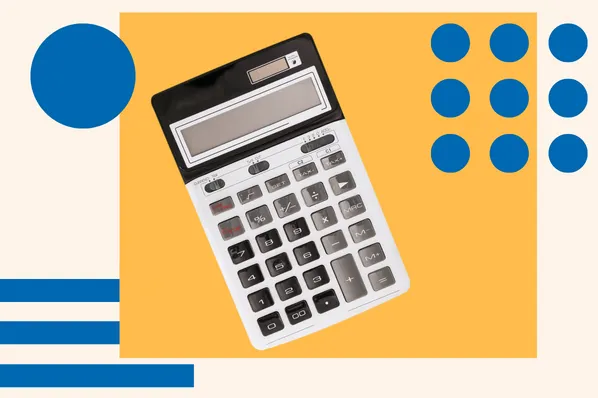When you own a business, it’s your responsibility to balance the money coming in with the money going out. To balance your books, it’s important to understand how business expense management works.
Business expense management is the process of paying, tracking, and analyzing your company’s costs.
The good news is that many of the costs associated with starting and running your company qualify as business tax deductions. Learning expense categories is one of the first steps to managing your spending and preparing for tax season.
Why you should know business expenses list categories
Knowing how to categorize business expenses makes it much easier to understand how money flows out of your business and can empower you to make better decisions about how you are spending money.
Let’s say your total costs start to get too high. You can see which categories have the highest cash outflow and represent opportunities to reduce spending.
Beyond this, knowing how to categorize expenses is a basic step in business bookkeeping. Because not all expenses are treated the same, dividing business expenses into their proper categories also makes tax time much easier.
Small-business expenses list
Here’s a look at the common business expense categories for a startup or small business.
1. Advertising
Advertising expenses can be anything directly tied to promotional activities that help you bring in new customers and keep your existing ones.
Examples of advertising expenses include:
- Setting up and maintaining your business website
- Pay-per-click (PPC) ads
- Social media ads
- Print assets, such as business cards
- Marketing tools
You report advertising, marketing, and promotions costs as selling expenses or selling, general, and administrative (SG&A) expenses on the income statement.
2. Payroll expenses
Your payroll expenses include the wages and salaries you pay your employees. This category also includes costs associated with running payroll, such as the employer’s portion of Social Security and Medicare taxes.
Payroll is often one of the most significant expenses for business owners.
Jonathan Merry, founder and CEO of financial publication Bankless Times, recommends “using freelancers when possible.” Hiring freelancers gives you more cash flow flexibility because you’re paying per project instead of a regular salary, and can help you save on ancillary costs like employee benefits (below).
3. Employee benefits
In addition to payroll expenses, you have costs related to employee benefits. These expenses can include paid time off (PTO), employer contributions to retirement plans, health insurance plans, and other benefits.
4. Business insurance
As a small-business owner, you pay business insurance premiums to protect your company from liability and legal fees. At the very least, you’ll probably have general liability insurance plus workers’ compensation insurance (if you have employees).
Other types of business insurance include professional liability, product liability, commercial vehicle, and business property insurance.
5. Rent, utilities, and phone bills
The costs associated with business properties fall into one category. This category includes rent, utilities, and phone bills for office space and storefronts.
6. Loan and interest payments
Many startup founders and small-business owners take out loans to get their companies going or to fund expansion. Your loan and interest payments are nonoperating expenses since they’re not directly tied to keeping your business running.
Interest expenses include the interest you pay on any line of credit for your company, such as loans and business credit cards.
7. Professional services expenses
Use the professional expenses category for the money you spend on professional and advisory services, such as when you hire accountants, lawyers, and consultants.
8. Training and education
Business-related training and education costs (including textbooks and online learning resources) fall into one expense category.
9. Vehicles
Business-related vehicle expenditures are another category of costs. This includes the cost of commercial vehicles (such as delivery trucks) and gas and insurance for cars used for the business.
10. Office expenses
Office expenses include office-related purchases that aren’t typically consumed in one year. Examples include furniture, computers, phones, and printers.
11. Office supplies
Office supplies refer to office-related items that you purchase with the intent of consuming them, usually within a year. Your office supplies expenses may include paper, pens, staples, ink, folders, binders, toiletries, and more.
12. Depreciation expense
A depreciation expense is a reduction in value that your business assets experience over time. It’s an operating expense, but there’s no actual cash leaving the business. Instead, you’re accounting for the loss of value of your assets (such as machinery or vehicles) over time.
Although it doesn’t affect cash flow, tracking depreciation helps you understand the value of your business assets over time. Plus, it can make tax filing easier because depreciation is a tax-deductible business expense.
13. Meals
Work-related meals can qualify as a business expense.
If you take your employees out to a restaurant or cater a companywide event, for example, that’s a business meal expense. Another example is restaurant entertainment expenses that you may incur for sales meetings or during the hiring process.
14. Travel
Business travel expenses include the costs of flights, trains, hotels, and taxis/ride-shares that are associated with running the business. Examples of business travel include sales meetings, conferences, and visiting production plants.
15. Inventory/cost of goods sold
For businesses that sell tangible products, the costs of producing and storing goods fall into the inventory and cost of goods sold (COGS) categories. COGS includes raw materials, factory labor, and shipping.
Tax-deductible business expenses list
If you’re wondering which types of expenses you can claim on your tax return, you can refer to this list of common tax-deductible business expenses:
- Advertising
- Cost of goods sold (COGS) / inventory
- Business insurance
- Business meals
- Business property rent or mortgage payments
- Business travel
- Business use of vehicles
- Depreciation
- Employee benefits
- Home office expenses
- Independent contractor costs
- Interest payments
- Machinery leases or rent
- Office furniture
- Office supplies
- Payroll
- Payroll taxes
- Professional services fees
- Property taxes
- Sales taxes
- Software subscriptions
- Utility payments
Your expenses usually need to be considered common and acceptable for your industry in order to be tax deductible.
You can find full details on requirements and limits for each category on IRS Publication 535, which provides instructions for business expenses.
Non-tax-deductible expenses
Your expenses must be for business purposes, not personal use, to qualify for a tax deduction.
Here are a few types of personal expenses that do not qualify as tax-deductible expenses, even if you’re a business owner:
- Personal vehicle expenses
- Personal cell phone and internet expenses
- Professional services for personal use (e.g., payments to a contractor to fix the roof of your home)
- Travel expenses for guests (e.g., the costs associated with bringing a family member on a work trip)
How to write off small-business expenses
Deducting business expenses can significantly reduce your tax burden. That’s because it reduces your taxable business income, and you’ll pay lower income taxes as a result.
You report expenses that qualify for tax deductions when filing your income tax return. The type of business entity you have determines which forms you need to use.
Here’s a quick overview:
- Sole proprietors, partnership members, and single-member LLCs report income and expenses on IRS Schedule C (Form 1040), which you attach to your individual tax return.
- C corporations use Form 1120 to report income, expenses, and gains/losses.
- S corporations use Form 1120-S to report income, expenses, and gains/losses.
- Multi-member LLCs can be taxed as partnerships or corporations, depending on how you set up your business.
Tips for deducting business expenses
Filing taxes as a business owner usually comes with more complications and requirements. Here are a few tips to help streamline the process and ensure you get all the tax benefits of owning a business.
Keep receipts
You should be able to support any expense that you write off on your taxes. The best way to do this is to keep records of credit card transactions and expense receipts that show where your money went.
You don’t need to include receipts with your tax return. But excessive expenses and deductions that are disproportionate to your income can trigger an audit.
You’ll need to submit supporting documents, such as receipts, for your expenses if the IRS does audit your business. As a rule, you should keep your business receipts for three years in case there’s an audit.
Use expense tracking software
Schedule C (Form 1040), Form 1120, and Form 1120-S each have line items for the qualifying expense categories. So, keeping a record of your expenses and categorizing your costs throughout can make tax filing much easier.
This is where expense tracking software can come in handy.
You can use expense tracking software to automatically track business spending and assign the right category to each purchase. Many providers also integrate with business accounting and bookkeeping platforms to streamline taxes even further.
Consult a tax adviser
Even with software, business taxes can be challenging to get right.
In addition to using software, Scott Maclver, CFO of SEO company Scalable Media, tells business owners to “work with a tax expert to help identify all the deductions you’re eligible for.”
A certified public accountant (CPA) can help you navigate frequently changing small-business tax laws to ensure you’re not missing any write-offs that can lower your business’s income taxes.
Tax write-offs may come with a learning curve, but knowing which expenses to deduct ultimately benefits you. In particular, deducting the money you invested into business growth lowers your taxable income and, as a result, your tax liability. This means you get to keep more of the money you worked hard to earn in the first place.
What did you think of this article?
Accounting









![Debt-to-Equity Ratio, Demystified [+Helpful Formulas]](https://53.fs1.hubspotusercontent-na1.net/hubfs/53/debt-to-equity-1-20250115-1477462.webp)





